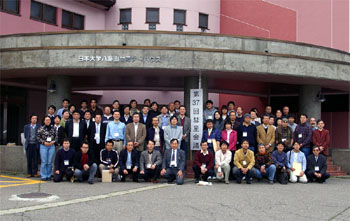
Click to enlarge.
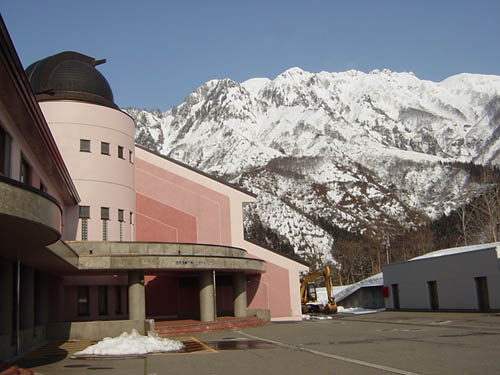
The Venue, the Hakkaisan Seminar House, Nihon University. The snow covered mountain is Hakkaisan.
Photo: Shigeki Murakami
 Click to enlarge. |
 The Venue, the Hakkaisan Seminar House, Nihon University. The snow covered mountain is Hakkaisan. Photo: Shigeki Murakami |
 Reception desk. A comet discoverer Masamitsu Nakamura received the document. |
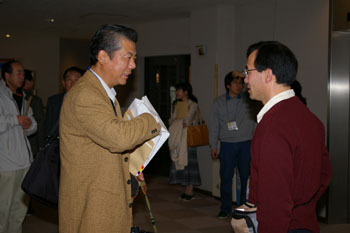 A Comet and novae discoverer, Hideo Nishimura (left), is talking with me. |
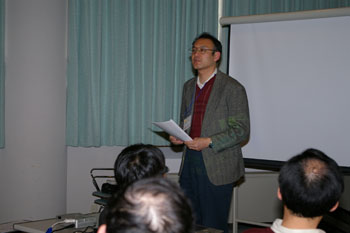 Opening statement by the Chair of the Scientific Organizing Committee, Junichi Watanabe of the National Astronomical Observatory of Japan (NAOJ). |
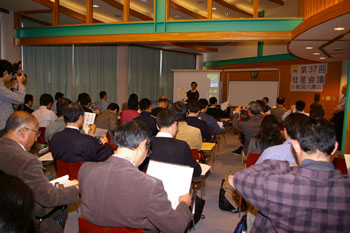 Greeting by me. |
 Special Lecture by Tsutomu Seki. |
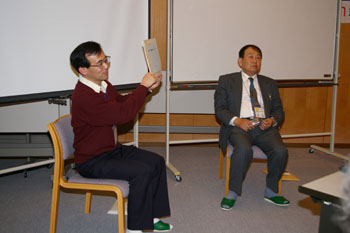 Talk show by Seki and Murakami. I showed one of the Seki's publications issued in 1975. I purchased the book when I decided to comet hunt in my boyhood. |
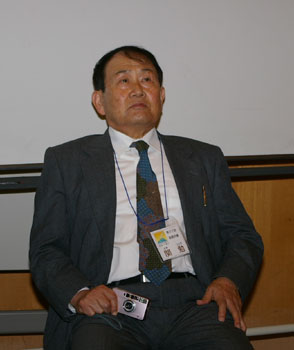 While I was reading his book aloud, Seki was listening to it in meditation. |
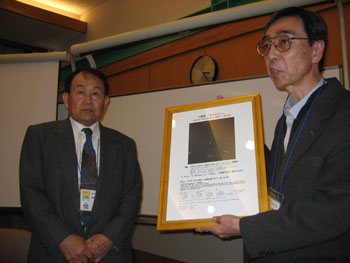 The photo of the asteroid, 'Murikabushi', was given to Seki by Hideo Fukushima of NAOJ. Murikabushi is a nickename of the 105 cm reflector telescpope at the Ishigaki-jima Observatory.The asteroid that Seki discovered was named Murikabushi after the telescope. Photo by S. Murakami. |
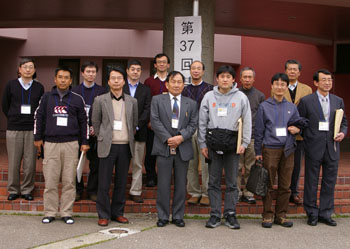 Discoverers of comet, nova, and super nova. W: Comet Swan; C: Comet; N: Nova; S: Supernova From left to right: Masayuki Suzuki (W), Yoshimi Ichimura (C,S), Shigeo Mitsuma (C), Yukio Sakurai (N), Masamitus Nakamura (C), Shigeki Murakami (C), Tsutomu Seki (C), Hirohisa Sato(W), HK (N), Osamu Abe (C), Seiichi Yoshida (N), Hideo Nishimura (C,N), and Akira Takao (N). |
 Toast by Seki. 150x25 Binocular is nothing to do with the Conferenfce. |
 The final mach of the game. |
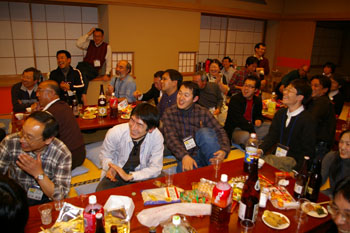 Party and a quiz game. |
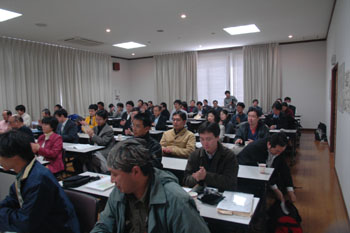 Presentation session on April 8 at Reiho Hakkai. |
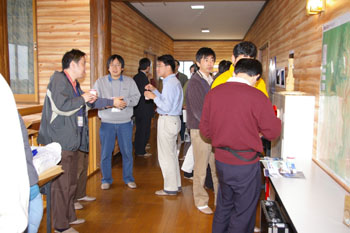 Coffee break. |